JURASSIC PARK: Celebrating 25 Years of Dinosaurs, Terror & Cinematic History
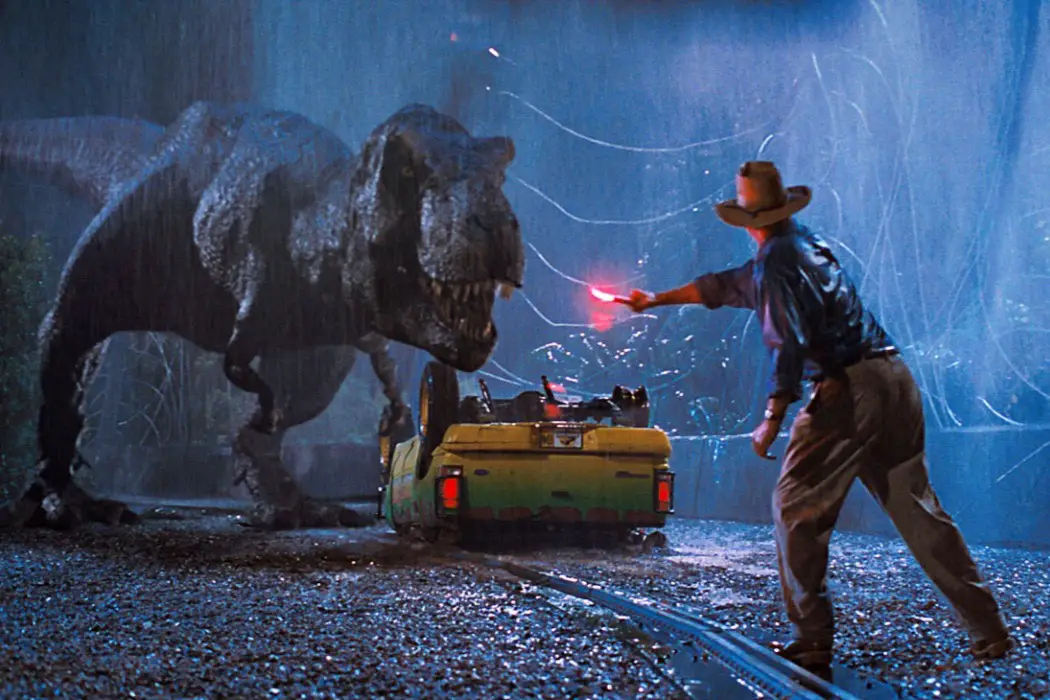
Stephanie Archer is 39 year old film fanatic living in…
The power of cinema is limitless, unbelievable stories and creatures brought to life before our eyes. Movie magic and the imagination move as one, creating timeless masterpieces for any and all ages. Nothing truer could be said when speaking of Steven Spielberg‘s Jurassic Park.
Celebrating the 25th anniversary of its release on June 11, 1993, this classic cautionary tale regarding the power of science and the consequences it can have has endured the test of time. Jurassic Park, since it’s release, has fascinated the imaginations of children and adults alike. The affects have been wide reaching beyond the screen as well, increasing interest in the field of paleontology.
With the release of the latest installment in the franchise and the anniversary this month, it seemed like the perfect opportunity to pause and remember this masterpiece of filmmaking – one that has refused to face extinction.
Making a Masterpiece
Jurassic Park was always poised for greatness. Michael Crichton, the author of the book of the same name from which the film is adapted, had an ingenious observation of the scientific ambitions of scientists of the time, perfectly encapsulating his fear of the dangers of science for profit within the story of Jurassic Park. Universal Studios purchased the rights to the book for 2 million before it was even published. It was clear from the beginning this would be a blockbuster success. From this moment on, every necessary piece of the puzzle came together perfectly.
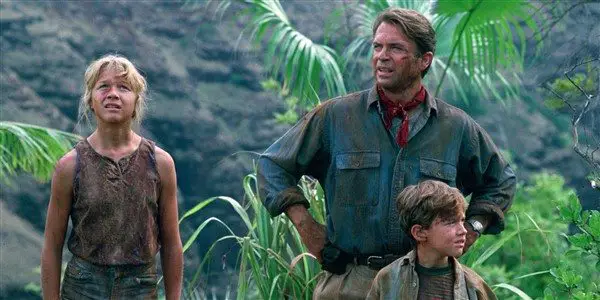
Spielberg, who was working on another film adaptation of Crichton‘s work (ER!) at the time, paused pre-development work to have the opportunity to helm this epic undertaking of a film. He would eventually return to ER, but to help in the development for TV. From this moment on, everything fell in line perfectly, from composer John Williams, to the film’s brilliant special effects team – who would say they could make something happen and successfully figure it out later (rings of water to announce the impending T-Rex) – and a talented cast, many who would reprise their roles in later sequels.
We all know what the film is about – if you don’t, you might have been living under a rock these last 25 years. A wealthy businessman invests in the creation of an amusement park. But not just any park, a Dinosaur Park – with real live dinosaurs brought back to life through blood found in prehistoric mosquitos. To preview the park’s opening, a team of scientists are brought in for approval; a visit that is met with life threatening consequences when the long forgotten monsters of nature break free.
At the time, monsters were nothing new to Steven Spielberg, neither were the animatronics used. He first “toyed” with them in a small film he directed from the 1970s called Jaws. Jaws was a blockbuster success, solidifying its name, much like Jurassic Park, in cinematic history. Yet, where Jurassic Park had found its success in the full showcase of its dinosaurs, Jaws found it in the absence of the shark. And it was a good thing as the absence was all due to the constant malfunctions of the Great White. Jaws was such a tense and terrifying film because you knew the terror was coming, but you rarely saw it. While the T-Rex did malfunction while on set, rain causing the larger-than-life animatronic to come alive on its own, Jurassic Park was able to create the edge-of-your-seat tension with a constant showcase its dinosaurs and special effect skill.
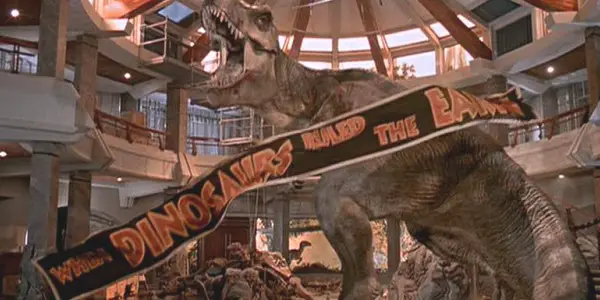
Yet, it wasn’t just the visual showcase of the animatronic dinosaurs that heightened the film, but also the extra attention to detail that gave further credibility to each of the dinosaurs. Different motions and behaviors were integrated in to the animatronic, making them more terrifying and fascinating as they were seemingly more real. Dinosaurs were programed to scratch themselves and whip their heads in response to sound to match agility making the terror and fascination Jurassic Park created more intense and full of wonderment. Viewers could almost believe that not only did they appear real on screen, but in real life.
Yet, the emotions a film draws can not only rely on effects and visuals alone. Jurassic Park would also become known and remembered for its brilliant score from John Williams. Opening with an ominous hymn-like sound, Jurassic Park‘s score evolves from wonderment to dramatic terror. When tasked with creating the score, John Williams set out to capture the fascination and wonder that the film presented to its viewers, and in doing so, created one of the most memorable scores in cinematic history. Recently, fellow writer Tom Bedford wrote about the score for Jurassic Park, as well as its evolution throughout the franchise from composer Michael Giacchino.
The cast was the final piece of the puzzle that solidified this film’s success. Sam Neill, Laura Dern, Jeff Goldblum, Richard Attenborough, BD Wong, Wayne Knight and Samuel L. Jackson (who was still fairly a newcomer at the time) all brought stellar and memorable performances to the table. Their dedication brought further believability to the film and to the dinosaurs they were fascinated by and running from. And lest we forget Joseph Mazzello and Ariana Richards who portrayed the two children, Tim and Lex, in Jurassic Park, both filling a necessary void and adding additional tension and child-like wonderment to the film.
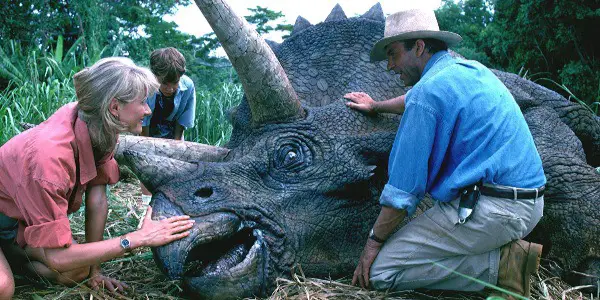
There is still a praise from the cast years later, a humbling acknowledgement of the opportunity they had being part of a timeless classic. Many have continued to lend themselves to the franchise, Jeff Goldblum returning for Jurassic Park: Lost World (the film’s first sequel) and again in the latest installment, Jurassic World: Fallen Kingdom. Laura Dean and Sam Neill returned for the film’s third sequel, Jurassic Park III, while BD Wong returned for the rebooted franchise Jurassic World and seems to be returning for Fallen Kingdom to reprise his role of scientist seemingly turned corrupt.
Looking back 25 years later, it’s hard to believe that each person involved in the making of Jurassic Park did not already know that it would become a blockbuster success, yet I doubt anyone could have foreseen the magnitude of its reach.
Imagination of the Young and Old
Jurassic Park knows no age, not just for itself but for those watching it. For adults, it awakens a childlike memory and desire, the monster like reptiles of the past we so longed as children to see alive. Jurassic Park is proof that the desires and imaginations of a child never truly become extinct, that they exist within us, waiting to be reawakened.
Where there were once only bones in a museum to satisfy the desires of the mind, Jurassic Park brought them to life on screen. And this was no Godzilla or dinosaurs that had come before. The animatronics on screen looked and moved as though they were real. They were convincing enough for the minds of a child, as well as adults, drawing a wide response of emotions from sheer wonder to sheer terror.
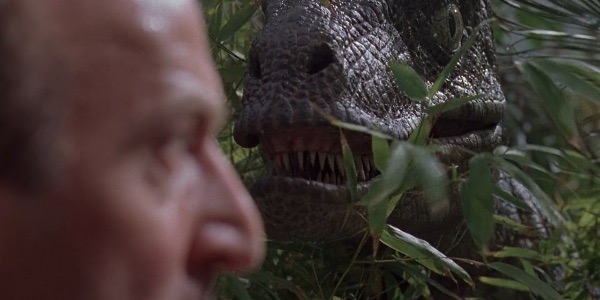
Children who play in the sand, mimicking the discovery behaviors of paleontologists have become the adults making current discoveries today. As recent as 2006, The Smithsonian Magazine reported that soft tissue from inside a T-Rex bone were discovered leading to the question on whether the fragile DNA within had remained intact during fossilization. While many have debated this discovery, and others that would follow after, Jurassic Park itself still seems like a distant fantasy. While these discoveries can not be directly linked to the film, the inspiration it has created has added to the ability of child-like wonder to become adult-like reality.
A Showcase of Power, Strength and Caution
Michael Crichton‘s novel is the full encapsulation of strength and power, as well as the terrifying consequences science can have. During a time when human and plant genomes were being investigated and discovered, and the manipulation of genes and DNA were bring considered, Crichton was able to see the potentially dangerous affects of this work and apply it to one of the most terrifying and fascinating creatures to ever walk the earth. Jurassic Park is the showcase of the power and strength of mankind, as well as a cautionary warning of the harm we possess when the Anniversary becomes more than just science.
Yet, the example of strength goes beyond the screen and to the man behind the film. Steven Spielberg would have a “double whammy” of a year in 1993, finding blockbuster success with Jurassic Park and critical acclaim with Schindler’s List (released later that year). While Jurassic Park was in post-production when he began filming for Schindler’s List, there were still visuals and effects that needed supervising. Spielberg would do this via satellite from Poland as he worked on his latest film.
Going from Dinosaurs to the Holocaust, Spielberg would come to resent the soon to be blockbuster success as the importance of a T-Rex shot was seemingly insignificant compared to the horrific genocide he was currently trying to capture. In interviews and retrospectives that would follow the release of both films, Spielberg would discuss this distain for the film at the time, revealing it would take him an hour just to become mentally prepared, to change his mind set from genocide to animatronic dinosaurs. While in a recent retrospective for the 25th Anniversary of Schindler’s List at the Tribeca Film Festival, Spielberg stated that while he was thankful after the filming of both films was complete and June’s success rolled around, there was a disdain for the classic hit while juggling both.
Jurassic Park: Conclusion
Jurassic Park is a timeless classic that has faced the test of time. A seemingly hit blockbuster before print even hit the book stands, it has terrified and fascinated the minds young and old for the last 25 years. Still inspiring further installments to the franchise, it seems that Jurassic Park is in no way at risk of extinction.
Do you remember when Jurassic Park was first released? What did you think of it then vs. now? Tell us your thoughts in the comments below!
Does content like this matter to you?
Become a Member and support film journalism. Unlock access to all of Film Inquiry`s great articles. Join a community of like-minded readers who are passionate about cinema - get access to our private members Network, give back to independent filmmakers, and more.













